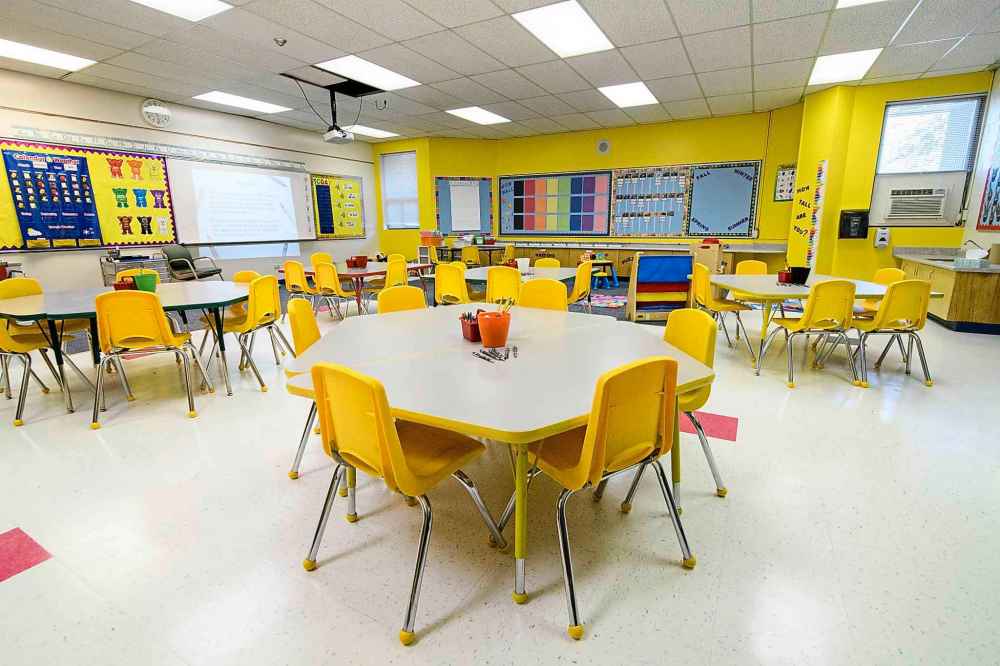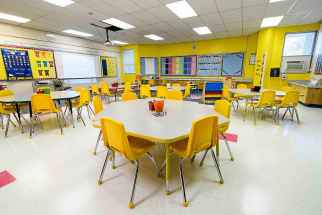Seeking balance in public school spending
Read this article for free:
or
Already have an account? Log in here »
To continue reading, please subscribe:
Monthly Digital Subscription
$0 for the first 4 weeks*
- Enjoy unlimited reading on winnipegfreepress.com
- Read the E-Edition, our digital replica newspaper
- Access News Break, our award-winning app
- Play interactive puzzles
*No charge for 4 weeks then price increases to the regular rate of $19.00 plus GST every four weeks. Offer available to new and qualified returning subscribers only. Cancel any time.
Monthly Digital Subscription
$4.75/week*
- Enjoy unlimited reading on winnipegfreepress.com
- Read the E-Edition, our digital replica newspaper
- Access News Break, our award-winning app
- Play interactive puzzles
*Billed as $19 plus GST every four weeks. Cancel any time.
To continue reading, please subscribe:
Add Free Press access to your Brandon Sun subscription for only an additional
$1 for the first 4 weeks*
*Your next subscription payment will increase by $1.00 and you will be charged $16.99 plus GST for four weeks. After four weeks, your payment will increase to $23.99 plus GST every four weeks.
Read unlimited articles for free today:
or
Already have an account? Log in here »
Hey there, time traveller!
This article was published 04/02/2020 (2135 days ago), so information in it may no longer be current.
Spending in Manitoba’s public school system grew by $696 million from 2007-08 to 2017-18 — a 42 per cent increase.
It’s a figure the province’s K-12 commission on public schools has likely put under the microscope, as it gets set to submit this month its long-awaited report to Education Minister Kelvin Goertzen.
The commission, headed by co-chairs Clayton Manness and Janice MacKinnon, is expected to tackle a wide range of governance and other issues, as it makes recommendations on how to improve K-12 education. Among those issues will be how tax dollars are spent in the public school system.
Of the $696 million in new operating spending on public schools (capital costs are calculated separately), the largest chunk went to regular instruction, according to the province’s FRAME (financial reporting and accounting in Manitoba education) reports on public schools. FRAME breaks down spending into nine categories.

!function(e,i,n,s){var t=”InfogramEmbeds”,d=e.getElementsByTagName(“script”)[0];if(window[t]&&window[t].initialized)window[t].process&&window[t].process();else if(!e.getElementById(n)){var o=e.createElement(“script”);o.async=1,o.id=n,o.src=”https://e.infogram.com/js/dist/embed-loader-min.js”,d.parentNode.insertBefore(o,d)}}(document,0,”infogram-async”);
Regular instruction includes teachers salaries and benefits, school supplies (including computers and software), as well as support staff and in-school administration.
Regular instruction spending grew by $388.4 million from 2007-08 to 2017-18, about 56 per cent of all new spending.
Student support services took up the second largest piece of new spending, at $141.4 million during that period. This includes salaries and benefits for resource teachers, clinicians, and support staff who provide services for special-needs students, plus costs related to student counselling and other student resources.
The operations and maintenance of schools — which includes utilities and minor upgrades — was third on the list, with $67.4 million in new spending. Transportation of students, mainly bussing, grew by $35.4 million during that period.
Divisional administrative costs (which tend to attract the most scrutiny) increased by $22.2 million, or 3.2 per cent of all new spending. Those include costs related to the administration of school divisions. However, they don’t include all administrative costs within the public school system. Each category has its own administrative spending.

Instructional and other support services, which includes costs for libraries/media centres, professional development and curriculum consulting, grew by $18.5 million.
Community education and services costs went up $8.1 million. Those include costs such as services to the community (facility and gym use), as well as non-credit courses to community groups.
One spending category called “fiscal” — borrowing costs, banking expenditures, bad debt expenses, and the Health and Education Levy — grew by $10 million. Adult education, a small part of the public school budget, rose by $3.6 million during the 10-year period.
All told, Manitoba school divisions spent $2.357 billion in 2017-18 — a 42 per cent increase over 10 years.
That’s more than twice the rate of inflation, which grew by 16.9 per cent during that period. Even per-student spending, which increased 38 per cent during that period, was more than twice the rate of inflation. (FRAME excludes two spending categories from the per student calculation: adult education and community education and services.)

!function(e,i,n,s){var t=”InfogramEmbeds”,d=e.getElementsByTagName(“script”)[0];if(window[t]&&window[t].initialized)window[t].process&&window[t].process();else if(!e.getElementById(n)){var o=e.createElement(“script”);o.async=1,o.id=n,o.src=”https://e.infogram.com/js/dist/embed-loader-min.js”,d.parentNode.insertBefore(o,d)}}(document,0,”infogram-async”);
It’s reasonable to expect school divisions could do a better job of managing their costs; not just in administration, in all areas.
The Pallister government’s four-year wage control policy (which Goertzen reiterated last week will apply) will go a long way towards achieving that goal, as salaries and benefits make up 82 per cent of total spending in school divisions. The mandated 15 per cent cut to senior executive positions within school boards will also help (although it’s small potatoes, overall).
Controlling spending in public institutions is not an easy task. It requires a sustained commitment to finding less-costly ways of doing business and making tough choices with limited taxpayer resources.
It’s reasonable to expect school divisions could do a better job of managing their costs; not just in administration, in all areas.
School divisions have taken on new roles and responsibilities over the years, including in the area of special-needs students. Those are valuable services, but they represent only a small portion of overall spending growth. Take the increase in special-needs spending out of the equation and overall spending in school divisions is still up 33 per cent from 2007-08 to 2017-18 (almost twice the rate of inflation).
The alternative to improved cost controls is, of course, higher taxes, which Manitoba voters eschewed in the last two provincial elections. People want well-funded schools, but there has to be a balance with taxpayers’ ability to pay.
Hopefully, recent measures by the Pallister government and the findings in the K-12 commission will help find that equilibrium.
tom.brodbeck@freepress.mb.ca

Tom has been covering Manitoba politics since the early 1990s and joined the Winnipeg Free Press news team in 2019.
Our newsroom depends on a growing audience of readers to power our journalism. If you are not a paid reader, please consider becoming a subscriber.
Our newsroom depends on its audience of readers to power our journalism. Thank you for your support.






